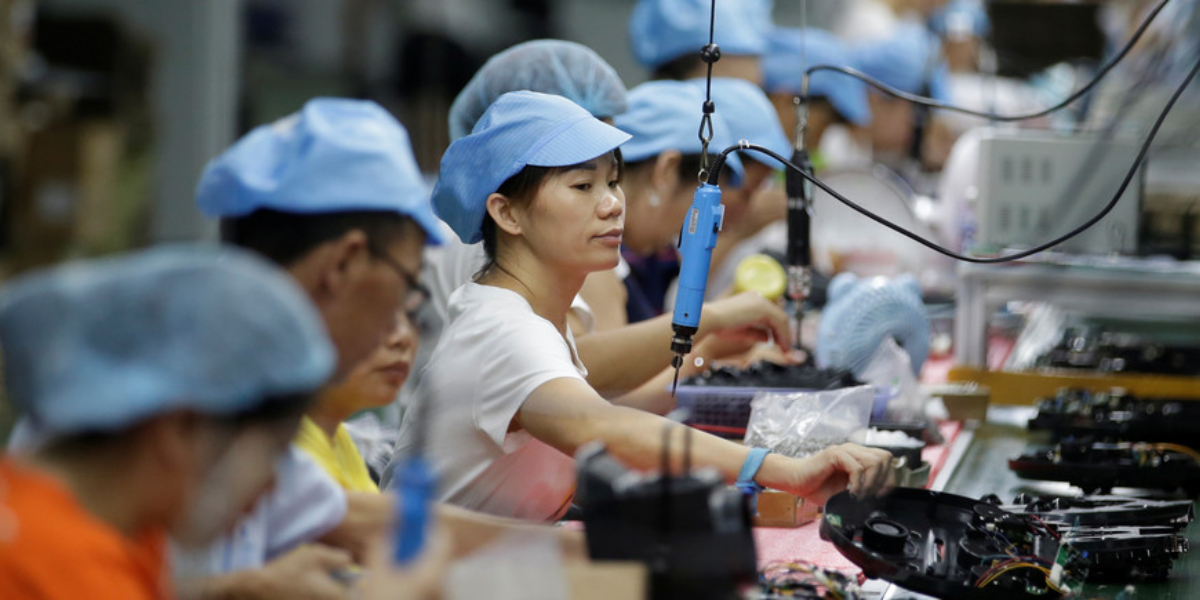- The Russia-Ukraine war triggered a surge in global commodity prices, which helped to fuel May’s improvement.
- According to the NBS data, industrial enterprises’ profits increased by 1.0 percent annually to $3.44 trillion yuan ($514 billion) in January through May,
- In the first five months, profits for auto manufacturing companies fell by 37.5 percent, while those in the ferrous metal smelting sector fell by 64.2 percent.
After a significant decline in profits in April, activity in major manufacturing centers picked up in May. However, COVID-19 restrictions continued to weigh on factory production and squeeze factory margins.
According to data provided by the National Bureau of Statistics (NBS) on Monday, profits decreased by 6.5 percent from a year earlier, which was less than the 8.5 percent decline in April.
The Russia-Ukraine war triggered a surge in global commodity prices, which helped to fuel May’s improvement. These industries saw soaring profits in the coal mining and oil and gas extraction sectors.
However, despite a major improvement in equipment manufacture, manufacturing sector profits fell 18.5 percent in May, according to a statement from senior NBS statistician Zhu Hong. Profits fell by a more drastic 22.4 percent in April.
“Overall, the performance of industrial firms has shown some positive changes, but it should be noted that the year-on-year growth of industrial profits continued to fall, with rising cost pressure and difficulties both operation and production,” Zhu said, adding that there was no solid groundwork for a rebound.
Production has progressively increased since last month, which has helped industrial enterprises’ profit decreases in COVID-affected Shanghai, Jiangsu in the east, and the northeastern provinces of Jilin and Liaoning all narrow by more than 20 percentage points, according to Zhu.
According to a statement from Goldman Sachs analysts, the difference in profit margins between upstream and downstream industries shrank in May, but the disparity in profits between diverse industries and businesses remained sizable.
After lockdowns, some firms in places like Shanghai resumed production, but the world’s second-largest economy’s sluggish recovery is now in doubt due to the depressed real estate market and worries about future waves of illnesses.
According to the NBS data, industrial enterprises’ profits increased by 1.0 percent annually to $3.44 trillion yuan ($514 billion) in January through May, slowing from the 3.5 percent increase in the first four months.
Read more: China’s policy package gradually pays off
In the first five months, profits for auto manufacturing companies fell by 37.5 percent, while those in the ferrous metal smelting sector fell by 64.2 percent.
Revenue growth for industrial enterprises over the same five-month period slowed from 9.7 percent increase in the first four months to 9.1 percent growth to 53.16 trillion yuan.
After contracting the previous month, China’s economy began to show signs of improvement in May as industrial production increased. However, poor consumer spending highlighted the difficulty facing authorities in the face of the ongoing drag from tight COVID-19 regulations.
China’s factory-gate inflation slowed to its worst pace in 14 months in May despite an increase in total industrial output, which was hampered by sluggish demand for steel, aluminium, and other important industrial commodities.
Zheng Houcheng, director of the Yingda Securities Research Institute, predicts that industrial profit growth will be higher in June despite cost challenges on businesses because the domestic COVID situation is improving and oil prices are unlikely to rise much.
In an effort to combat the economic harm caused by COVID, China’s cabinet issued a plethora of fiscal, financial, investment, and industrial policies in May.
The measures show how determined the government is to support the country’s economy, but economists say a 5.5 percent growth target will be challenging to hit if China maintains its pricey zero-COVID control policy.
This month, the nation committed to increase economic support and implement further policy changes, but added that it would refrain from printing too much money.
For the latest International News Follow BOL News on Google News. Read more on Latest International news on oldsite.bolnews.com

















